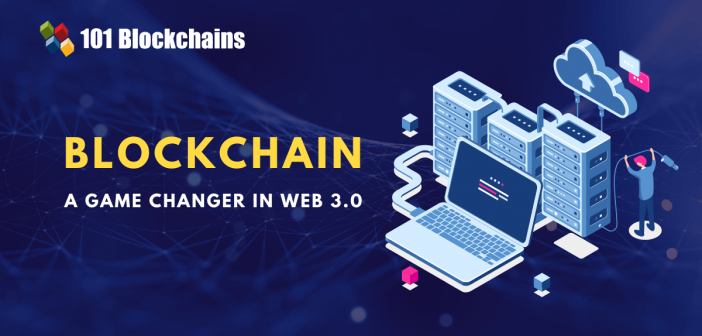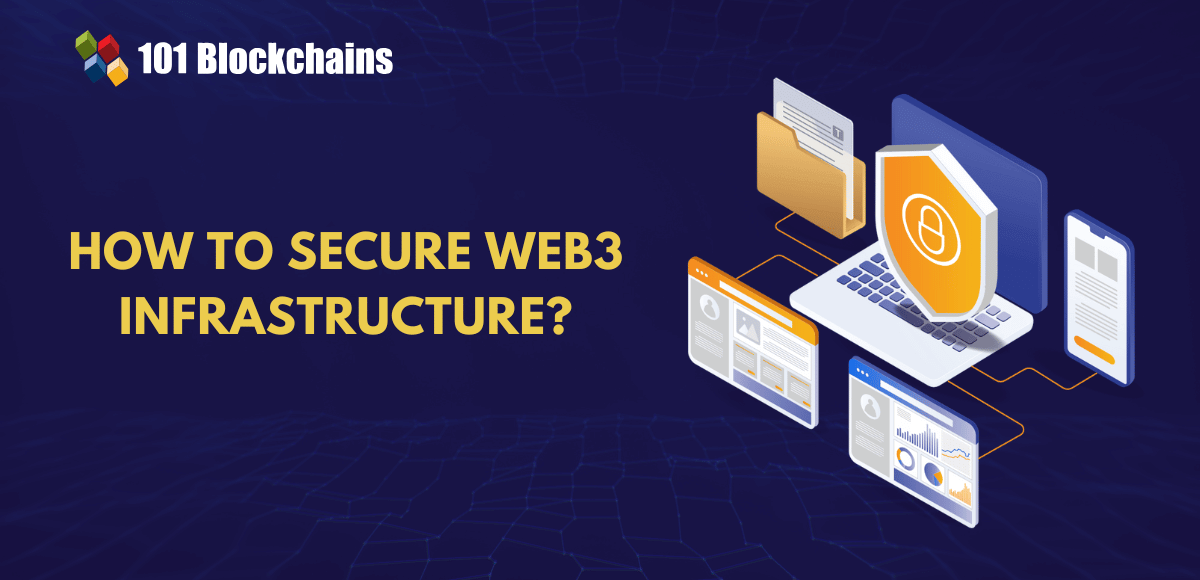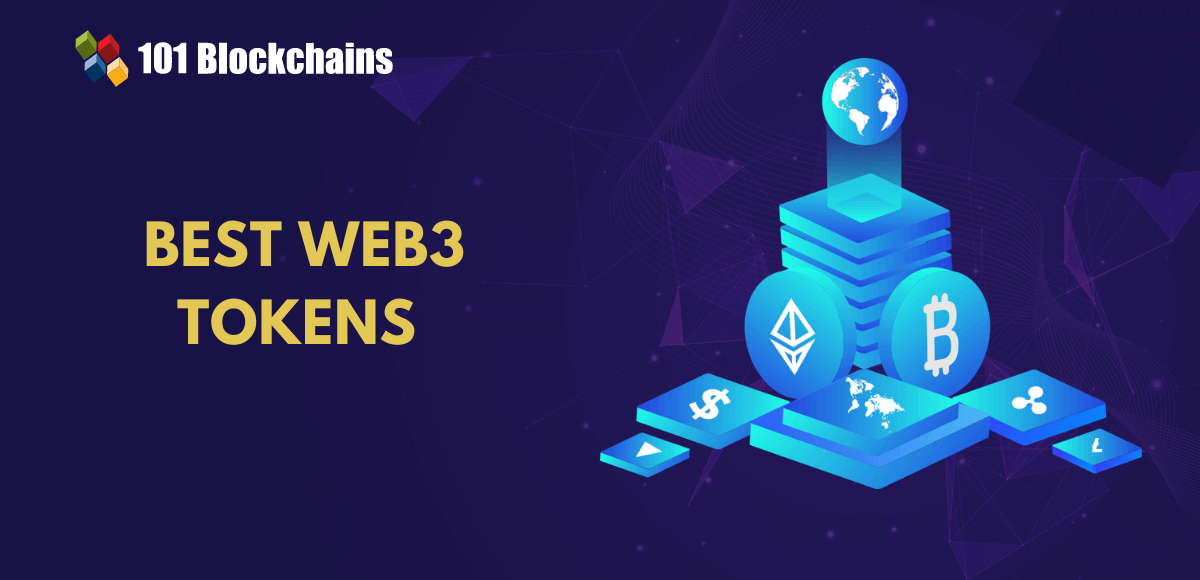Learn how blockchain truly works, master key definitions, and uncover what makes smart contracts so "smart." Dive into the fundamentals, gain valuable insights, and start your blockchain journey today!

- Web3
Diego Geroni
- on November 19, 2021
The Role of Blockchain in Web 3.0
Want to learn about how blockchain is connected with Web 3.0? Here we bring a detailed guide on the role of blockchain in Web 3.0.
The internet is undoubtedly one of the most vital aspects of the life of almost every individual on this planet. As a matter of fact, it is quite difficult to imagine life without the internet at your disposal. Moreover, a global pandemic has further established how significant the internet can be in times of crisis.
However, the internet we know today is quite murky when it comes to data safety. The web has grown manifold in the years since its inception. Many new forms of the internet have developed before ultimately leading to the introduction of blockchain in web 3.0. The following discussion would offer you a detailed impression of how blockchain can drive the growth of Web 3.0.
Build your identity as a certified blockchain expert with 101 Blockchains’ Blockchain Certifications designed to provide enhanced career prospects.
The Road to Web 3.0
Before diving into the role of blockchain in the new iteration of the web, it is important to reflect on the journey of the web itself. As of now, we have witnessed the two distinct variations of the internet, the web 1.0 and web 2.0.
Web 1.0 was the first iteration of the internet and represents the first arrival of the internet in late 1980s. It included only static ‘read-only’ messages, developed by only a few participants. One could clearly notice that the web 1.0 was indeed a major technological intervention for its time. People could use the internet to access published content from any corner of the world. However, web 1.0 had some formidable restrictions on interacting with the content.
Subsequently, the world witnessed the growth of web 2.0 which focused on significant improvements in user participation and interaction. Web 2.0 allowed users for creating their accounts through different applications, thereby developing their unique personal identities on the internet. As a result, e-commerce and social media platforms started exploring new opportunities for reaching a wider audience. The rise of web 2.0 also fostered the development of many revolutionary web technologies such as Hypertext Markup Language 5 (HTML5), Cascading Style Sheets 3 (CSS3), and JavaScript.
Now, the world is shifting towards the latest paradigm in the web’s development journey with the arrival of web 3.0. So, what does the new iteration of the internet has to offer? Let us find out more about the new approach towards the internet and the technologies which will play a crucial role in driving this new revolution.
What is Web 3.0?
The first question that comes to mind when you think of the new iteration of the internet is its definition. With Web 3.0, you can find that it is basically the third generation of internet services. In addition, it has the power of technologies such as artificial intelligence, IoT, and blockchain. The third generation of the web has a formidable focus on innovative technologies such as AI and machine learning. In addition, it also focuses on empowering better prospects for security. It is important to understand the background leading to the growth of Web 3.0 for a more comprehensive definition.
Web 2.0 definitely played a crucial role in introducing a new perspective on social interactions. It brought producers and consumers of products, services as well as information on a single stage. Most important of all, web 2.0 also opened new prospects for leveraging P2P transactions on a global level. However, the most critical issue associated with web 2.0 was primarily evident in the role of a platform that must serve as a trusted intermediary between two parties that do not trust each other. The Web 2.0 platforms have definitely developed a P2P economy along with a prolific value settlement and content discovery layer. However, the web 2.0 platforms take on a controlling role by dictating the rules of the transactions alongside controlling the data of users. You can now clearly observe the issues which lead to the Web 3.0 definition.
Driving towards Decentralization
The internet people use in present times is more like a standalone computer. All the data on the internet is subject to centralized storage and management through servers of specific trusted institutions. Firewalls are essential for safeguarding data on these servers and system administrators have to address the concerns of server and firewall management. In such cases, the power and control accumulate within centralized entities. On the other hand, the setbacks associated with centralized power have been clearly evident with prominent examples in the past. The global financial crisis of 2008 showed the crevices in centralized power, thereby setting up the stage for decentralization. The decentralized architecture of Web 3.0 aims to resolve the issues emerging from centralized power and control. Some of the formidable issues addressed by Web 3.0 would refer to user trust, transparency, and privacy.
The foundations of the Web 3.0 definition, as outlined by World Wide Web creator Tim Berners-Lee, painted it as the Semantic Web. It basically focuses on introducing an autonomous, open, and intelligent internet. Web 3.0 examples can show how data would be interconnected in a decentralized manner along with opportunities for machines and users to interact with data. At the same time, semantic web and artificial intelligence would serve as the main pillars underlying the third generation web.
Curious to develop an in-depth understanding of web3 application architecture? Join the Standard & Premium Plans and Enroll Now in Web3 Application Development Course!
Significance of Blockchain in Web 3.0
The most important aspect of web 3.0 examples such as Siri and Alexa voice assistants shows how machine learning can develop a new array of internet services. Other than the signs of introducing machine learning and connecting machines through IoT, the third generation of the internet would run on decentralized protocols. Therefore, it is important to find a possible convergence of blockchain in web 3.0. Networks in the third generation of the web exhibit interoperability, and automation by leveraging smart contracts, seamless integration, and censorship-resistant storage of P2P data files. Therefore, it is quite clear that blockchain would serve as a key driving force for the next generation of the internet.
Blockchain plays a crucial role in transforming conventional approaches to data storage and management. In layman’s terms, blockchain offers a unique collection of data or a universal state layer, which is subject to collective management. The unique state layer provides the opportunity for developing a value settlement layer on the internet. The state layer helps in sending files in a copy-protected manner to enable effective P2P transactions without any intermediaries.
Build your fluency in Web3 and develop decentralized solutions with the world’s first Web3 Expert Career Path with quality resources tailored by industry experts Now!
How Did Blockchain Establish the Road to Web 3.0?
The arrival of Bitcoin was one of the first points for drawing the outline for Web 3.0. The Bitcoin blockchain and other protocols helped in creating networks where hackers would have to break into multiple houses all over the globe for accessing data in one house. Blockchain placed the foundation for web 3.0 definition as it facilitated data storage in multiple copies of the P2P network. The protocol helps in the formal specification of management rules in the protocol. In addition, the protocol also guides the security of data through majority consensus from all participants in the network. The participants receive incentives in the native network token for their contribution to the network’s security and maintenance.
Blockchain is truly the foundation for Web 3.0, especially when you think of how it transforms data structures in the backend of the web. Most important of all, it supported the development of a governance layer running over the existing internet. The governance layer can now allow two unknown people who don’t trust each other to reach agreements and settle transactions over the Internet. Interestingly, the functionalities of blockchain in Web 3.0 would focus largely on introducing a backend revolution. From a technical perspective, you can think of Web 3.0 as a collection of blockchain-based protocols focused on changing the backend wiring of the internet. Most important of all, it is easy to consider blockchain as a distributed world computer that will change the way we look at the internet.
Start your blockchain journey Now with the Enterprise Blockchains Fundamentals – Free Course!
Blockchain in Web 3.0 Examples
One of the prominent web 3.0 examples with the explicit functionalities of blockchain is Follow. The decentralized, autonomous organization has come up with a groundbreaking decentralized social protocol for the next generation of web services. The blockchain-based social protocol of Follow intends to offer complete control of the social identities and data of users to them. The development of Web 3.0 also focuses on the creation of new social infrastructures which must fulfill the core precedents of the Internet. Blockchain removes the need for trusted intermediaries alongside enabling the networks to collectively remember the user interactions or preceding events. So, blockchain is definitely a significant force in opening up the possibilities for the internet with better decentralization.
Learn the fundamentals, challenges and use cases of Web3.0 blockchain from the E-book: AN INTRODUCTION TO WEB 3.0 BLOCKCHAIN
Bottom Line
The role of blockchain in Web 3.0 is quite clear from basic observations about the third generation of the web. Blockchain arrived as a formidable force and transformed conventional enterprise processes with its distinct traits. However, the most significant trait of blockchain which presents an ideal foundation for web 3.0 is decentralization. The prominent issues identified with Web 2.0, especially centralized control and concerns of data integrity, present the need for a new variation of the internet. With the third iteration of the web, users could gain access to an autonomous and open internet. At the same time, it is also important to note how machine learning, AI, and IoT would support the rise of the third generation of the web.
If you want to know more about blockchain, enroll for blockchain courses and certifications!
*Disclaimer: The article should not be taken as, and is not intended to provide any investment advice. Claims made in this article do not constitute investment advice and should not be taken as such. 101 Blockchains shall not be responsible for any loss sustained by any person who relies on this article. Do your own research!







